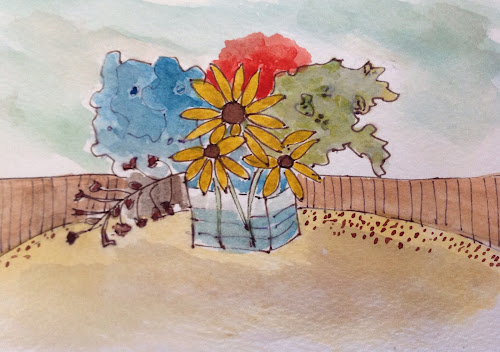I used my watercolors to capture some quick impressions of Ghana on bookmarks I had prepared ahead and brought with me for the purpose. These were all done in about 40 minutes, first drawing with an India ink pen and then color added with my watercolor brush pen. My interest in the trees is apparent, but I hope to do more sketches of the wonderfully colorful women carrying fruit and other goods on their heads and babies on their backs.
Arriving in Ghana, we docked in Takoradi, a bustling and important deepwater seaport city. Together with its sister city Sekondi it is the capital of western Ghana. The discovery of oil in the area has lead to a massive migration of people from all over the world. There is much poverty, and living conditions are quite different from what we are used to in the US, however the people seemed active and engaged in their daily activities with markets for fresh food and goods on every corner.
The sea is an integral part of life here, and we passed an active fish market with fish drying at the edges of the road. The beaches are beautiful, and there is a growing tourist industry.
The saddest part of human history is man's inhumanity to his fellow man. Among these is the exploitation of the Africa races. On the coast near Takoradi is Cape Coast Castle, a UNESCO World Heritage Site built by the Swedes in 1652, later occupied by the British. Slaves were held here, sometimes for months in unspeakable condition while awaiting transport to new worlds in need of cheap manpower to support growing economies. Below is the doorway of no Return, where slaves held in dungeons for months would catch a view of the sea before being herded in the holds of waiting ships.
The slave trade was a multinational business. Not only did the Swedes build the castle, which was occupied by the Portuguese and the British, but the slaves were prisoners of war from the tribal wars in Africa, were supplied by fellow Africans and Arabs, and shipped in French, British, Dutch and Portuguese ships to work in their colonies in the new world.
It was encouraging to see the bustling waterfront today, with the selling of fish and the mending of nets, children playing soccer, and families enjoying a swim in the sea in an area that had once held such heartbreak.



























